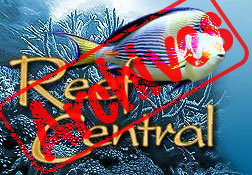

|
|
|
#1
|
|||
|
|||
|
Real Ocean Corals???
So do the wholesalers get the fish and corals from the sea and then grow them out and sell them to all of us?? I always wondered this operation?
__________________
!TaNg LoVeR! |
|
#2
|
|||
|
|||
|
Most stores just buy stuff that was taken from the ocean and sell it to us. A very few percentage of animals in the LFSs are farm raised or propagated.
|
|
#3
|
|||
|
|||
|
o wow dat is crazy!! at least now i know thanks alot
__________________
!TaNg LoVeR! |
|
#4
|
|||
|
|||
|
There is very little growing out at wholesalers IME.
They get them in, they sell them, they go to LFS's. Most corals do not stay long at wholesalers IME. JME There are some retailers who do grow corals out, farm them, sell off the frags from parents but this is rare. It just costs to much to operate like this. Mark up from the wholesalers is nothing compared to the markup from the LFS's IME. IME most LFS mark up about 300% or more, which sounds like a lot before you take in operating costs and losses. For example wholesalers can sell a TR seahorse for about $10, the consumer pays at least $30 and often into the $60 range. Personally I can get things cheaper then my LFS but like to support the local industry myself, even on dry goods etc. JMO
__________________
THE MEDIOCRE MIND IS INCAPABLE OF UNDERSTANDING THE MAN WHO REFUSES TO BOW BLINDLY TO CONVENTIONAL PREJUDICES AND CHOOSES INSTEAD TO EXPRESS HIS OPINIONS COURAGEOUSLY AND HONESTLY |
|
#5
|
|||
|
|||
|
ya very true i figured how that worked....... cuz some corals say agracultured or som ething like dat?????
__________________
!TaNg LoVeR! |
|
#6
|
|||
|
|||
|
wild caught = just harvested from the reefs
aquacultured = in situ tropical farms. they grow it near the reefs,but it doesn't impact the actual reefs. i think also called "maricultured". still grown in the ocean, but sustainable. captive raised, captive aquacultured (too many buzzwords, maybe I'm messing them up too)- raised outside of the natural ocean environment. I would bet that the hobbyist tank production of frags is off the hook, and there is no way of tallying all of it. I couldn't tell you how many frags I have handed out/traded/sold over the years. Way, way more than I bought, that's for sure. The new paradigm of coral survival: be really eyecatching to the humans so they take you, the sunset monti home, and spread you around to a thousand tanks, and leave the homely tan digitata to perish. 
__________________
Only Dead fish swim with the current. |
|
#7
|
|||
|
|||
|
furthermore, I honestly can't say when the last time was I picked up anything wild caught. why horse around with it. all the cool stuff is being fragged, and the value is better.
regarding size (of coral frags): if they are going to grow, they will grow. if they are going to die: small loss. also IMO/IME the smaller the frag, the hardier it is. so win-win-win
__________________
Only Dead fish swim with the current. |
|
#8
|
|||
|
|||
|
y very true frags grow and grow and more and more frags come from that making a whole new piece. Amazing huh!? just wanted to get some info before i start adding my fisrt corals into my 125
__________________
!TaNg LoVeR! |
|
#9
|
|||
|
|||
|
aquacultured and captive raised corals make up less than 2% of the total amount of corals offered in the United States as of 1996. At that point, the United States represented more than 80% of live coral exports, accounting for some 3000 tons, or at least 350,000 individual pieces. Since then the export and growth has continued to boom by 20-30% per year. (all data per MAC). Those of us contributing to the captive harvest of live coral specimens are truly laying the groundwork for this hobby's survival.
__________________
Check out my new 75 gallon reef thread by clicking on my red house! |
|
#10
|
|||
|
|||
|
amazing!!!
__________________
!TaNg LoVeR! |
|
#11
|
|||
|
|||
|
wow
__________________
"When the power of love overcomes the love of power the world will know peace. " - Jimi Hendrix" |
|
|